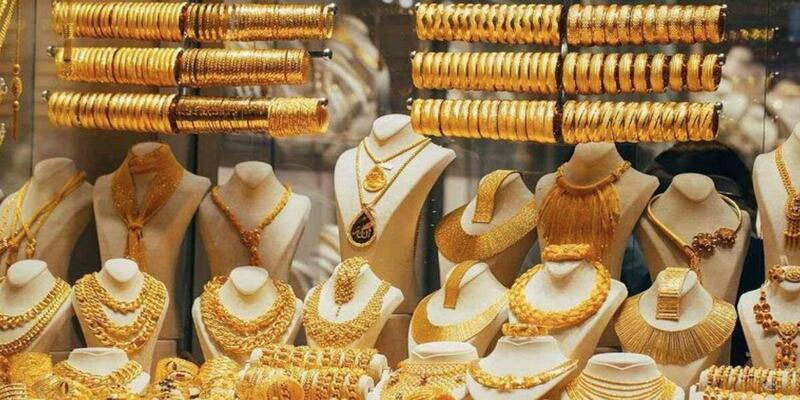Advertisement
Countries with the Strongest Demand for Gold Jewelry
Aug 24, 2024 By Kelly Walker
Gold jewelry has had several purposes throughout human history, including as an ornament, a store of value, and a symbol of cultural identity. Gold jewelry has always been and will always be a highly sought-after luxury item and status symbol. Nonetheless, countries have significant differences in the desire for gold jewelry. This can be attributed to cultural relevance, economic stability, and disposable income. With an estimated 25% of global demand, India is the largest buyer of gold jewelry. Gold is presented as a gift at weddings and festivals because it is seen as lucky in India's religious and cultural traditions. The demand for gold jewelry in China accounts for about 17% of the global total. Gold is widely seen as a safe investment and retirement asset in China. The country's rising middle class now has more disposable cash to spend on flashy purchases like gold jewelry.
The United States accounts for almost 8 percent of global demand for gold jewelry, making it the third-largest consumer. Gold's cultural significance in the United States is less significant than in India or China. However, gold jewelry is still trendy and is often seen as a symbol of social prestige in both countries. Jewelry made of gold is in high demand throughout the world. Still, it is trendy in the Middle East and Europe due to the ornamental and monetary value of the metal. This article will examine the top gold jewelry-consuming countries, discussing the cultural significance of gold jewelry and the factors contributing to its high demand.
India
With almost 25% of global demand, India is the most significant consumer of gold. Gold is presented as a gift at weddings and festivals because it is seen as lucky in India's religious and cultural traditions. Also, many people purchase gold jewelry as an investment because of its association with riches and success. The rising middle class in India is another factor driving the country's gold demand because its members now have the means to buy and flaunt expensive jewelry.
China
Around 17% of the world's demand for gold jewelry comes from China, making it the world's second-largest consumer of gold. Gold's historical importance to the Chinese extends to its use as jewelry, currency, and investment. China's rising middle class has more discretionary spending. It is keen to show off its newfound prosperity by purchasing flashy pieces of gold jewelry, driving the country's demand for the precious metal. Furthermore, gold is frequently presented as a token of appreciation during weddings and other significant events.
The United States

An estimated eight per cent of global demand for gold jewelry comes from the United States, making it the world's third-largest consumer of gold. Gold's cultural significance in the United States is less significant than in India or China. However, gold jewelry is still trendy and is often seen as a symbol of social prestige in both countries. Gold is also frequently bought as an investment, especially during economic turmoil. As the middle class expands and prospers, more people in the United States can afford luxury goods like gold jewelry, further fueling the country's gold demand.
Middle East
Demand for gold jewelry is high in the Middle East due to the region's cultural and religious significance. Gold jewelry is famous for formal events like weddings and other formal occasions and is also a popular present. Furthermore, many individuals in the Middle East consider gold to be both a safe investment and a store of value, particularly in nations with shaky economies. The demand for gold jewelry is exceptionally high in the Middle Eastern countries of Saudi Arabia, the United Arab Emirates, and Qatar.
Europe

Europe is another primary market for gold jewelry, though demand varies widely from nation to country. Gold jewelry is especially prized in the Mediterranean and is frequently handed down from generation to generation as a family treasure in nations like Italy, Spain, and Greece. Gold jewelry is still attractive but has less cultural significance in other countries such as France and Germany. Gold's popularity as an investment fuels its demand throughout Europe, particularly during economic instability.
Conclusion
Gold jewelry continues to be a coveted status symbol and premium luxury item worldwide. Gold jewelry is most prevalent in India, China, and the United States because of these countries' high per capita incomes, long standing traditions of wearing gold, and the cultural significance of the metal. Jewelry made of gold is in high demand throughout the world. Still, it is trendy in the Middle East and Europe due to the ornamental and monetary value of the metal. Gold jewelry is commonly presented as a gift at significant life events like weddings and anniversaries because of its perceived value as an investment. Gold jewelry is bought for various reasons, but regardless of the motivation, it will always be significantly sought after as a sign of riches, prosperity, and status.
Advertisement

Everything You Should Know About Mechanical Investing

Which Is Better, Coinsurance or Copays?

The Battle of 401(k) Providers: Charles Schwab vs Employee Fiduciary

The Ins and Outs of Revolving Credit: What You Need to Know

What's A Financial Hub

Are REITs Beneficial During a High-Interest Era?

What Is a Gross Income Multiplier?

Investing in Stock Rights and Warrants

Best Auto Loan Rates and Lenders

